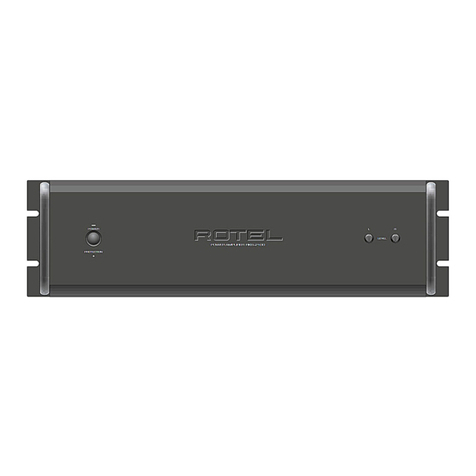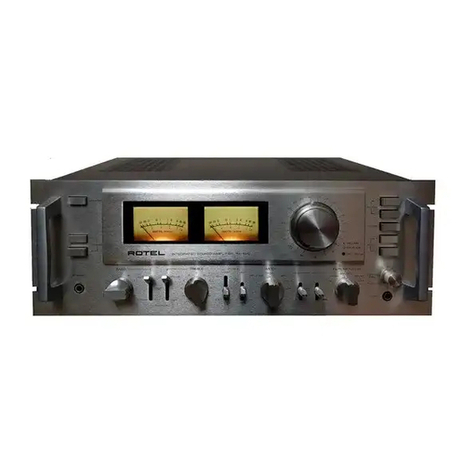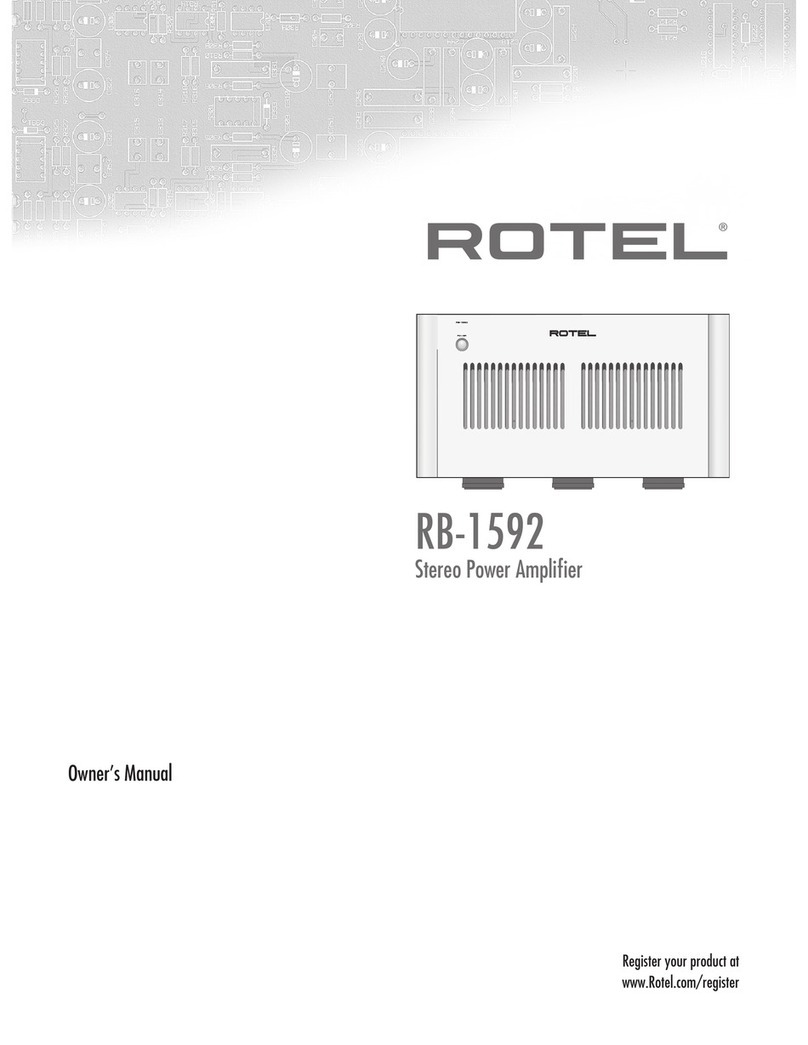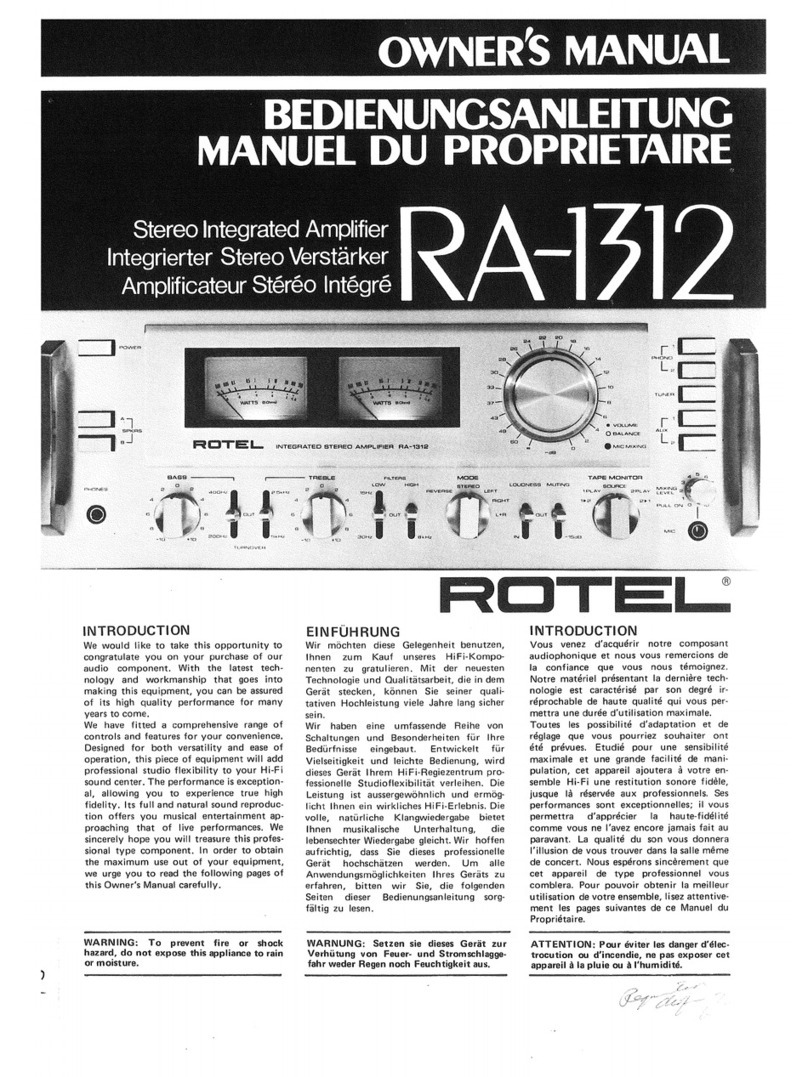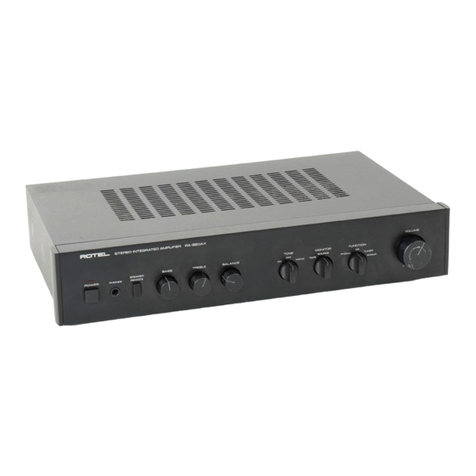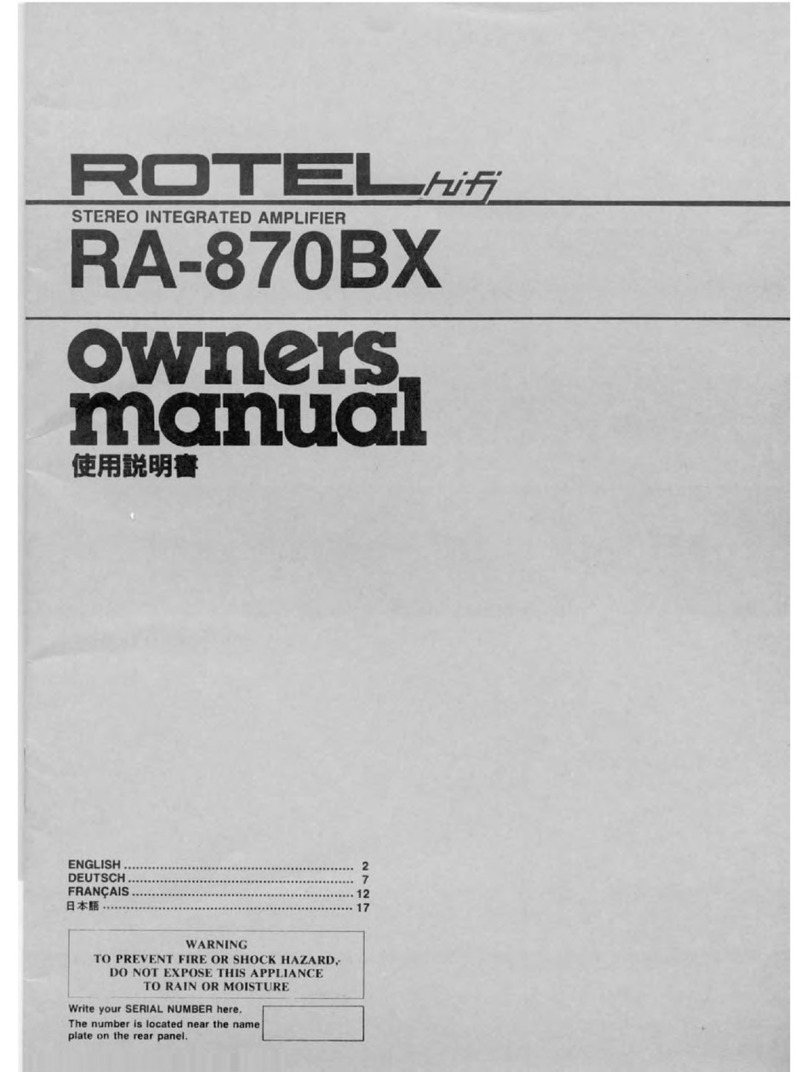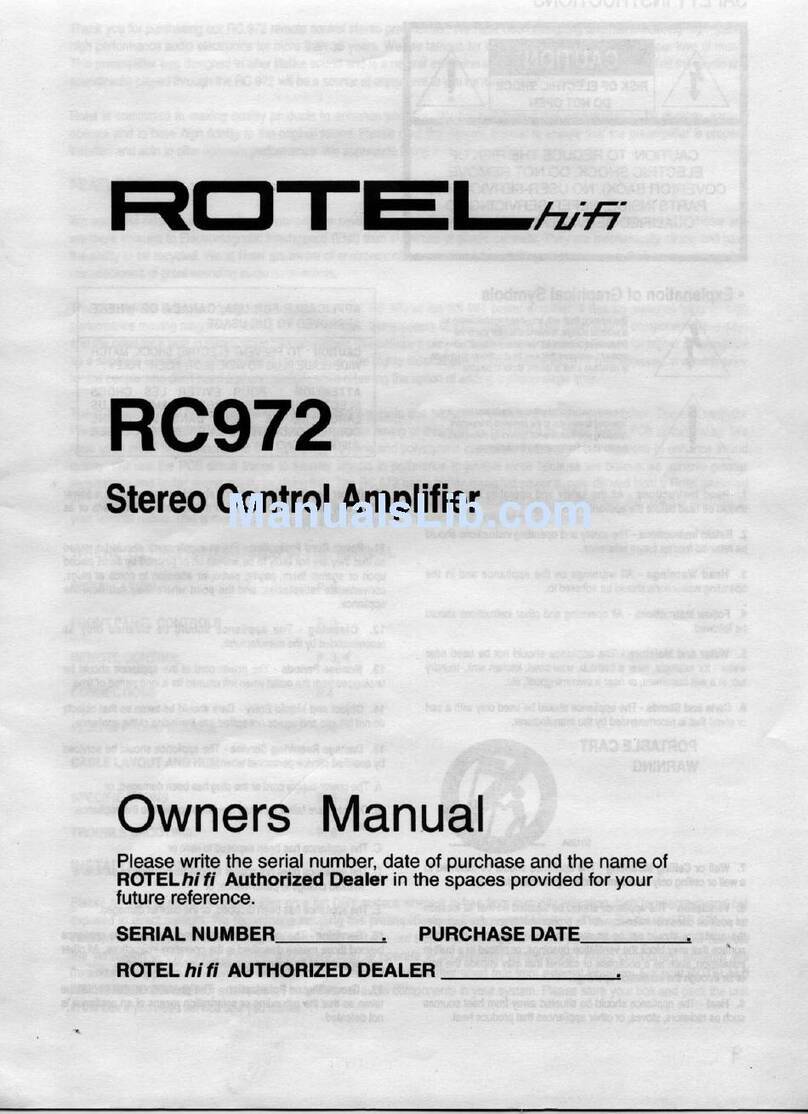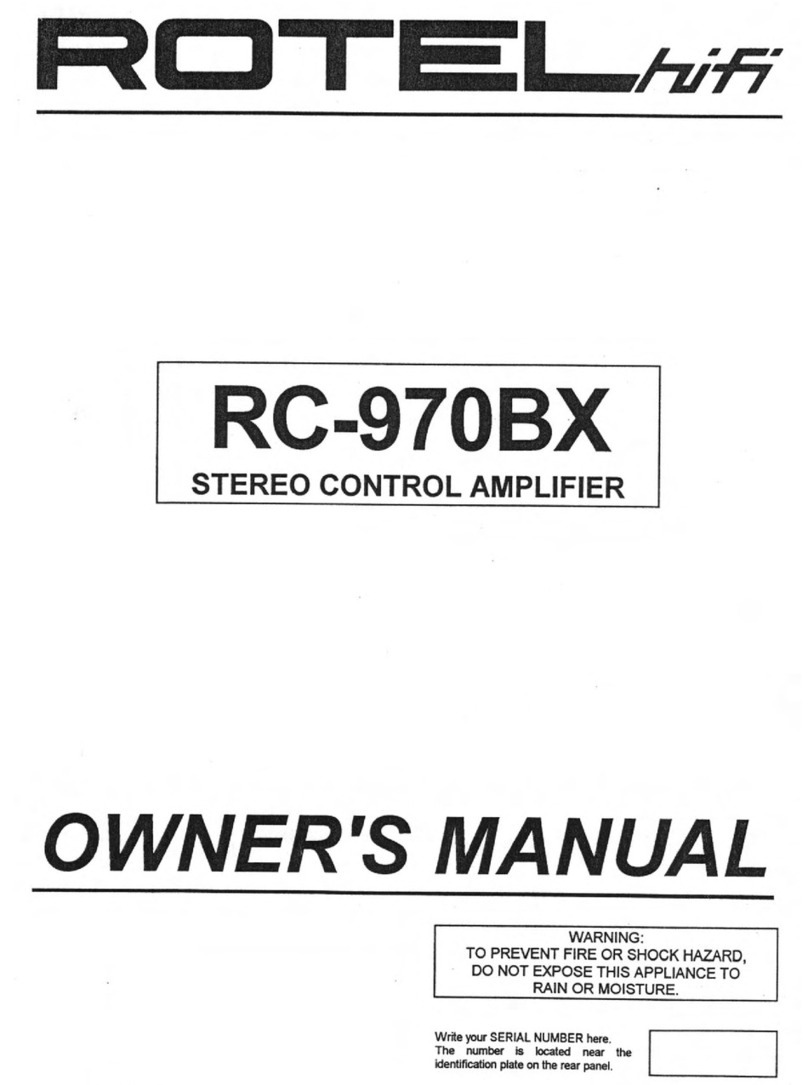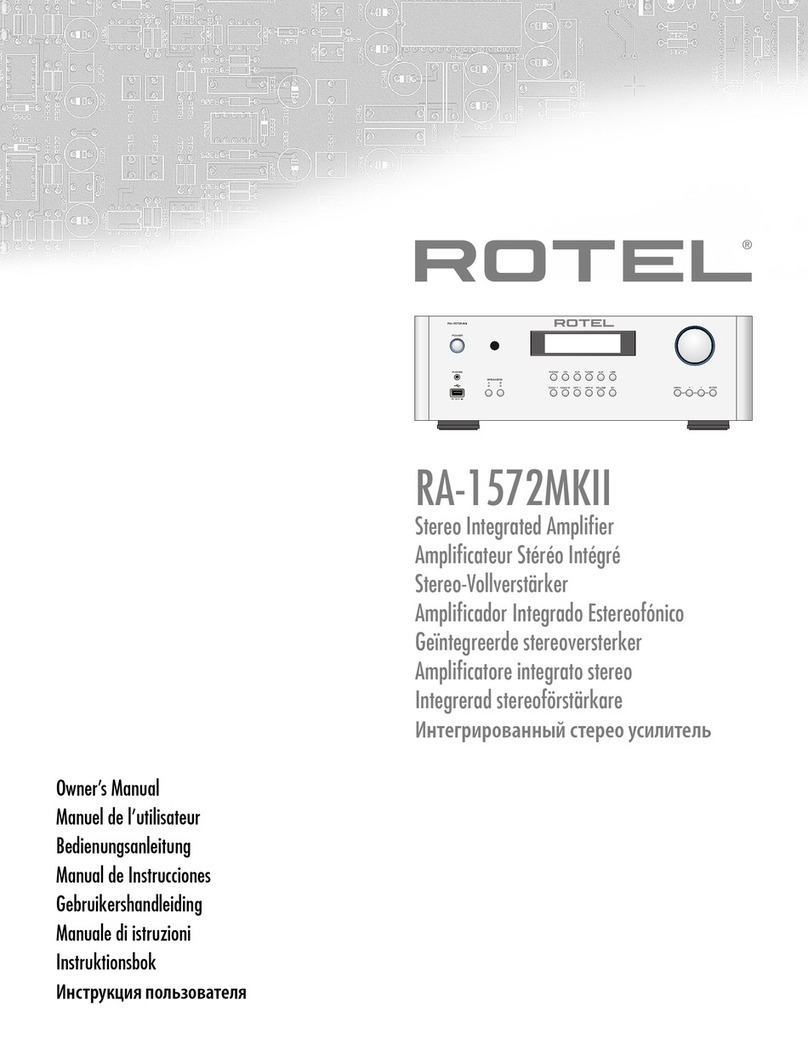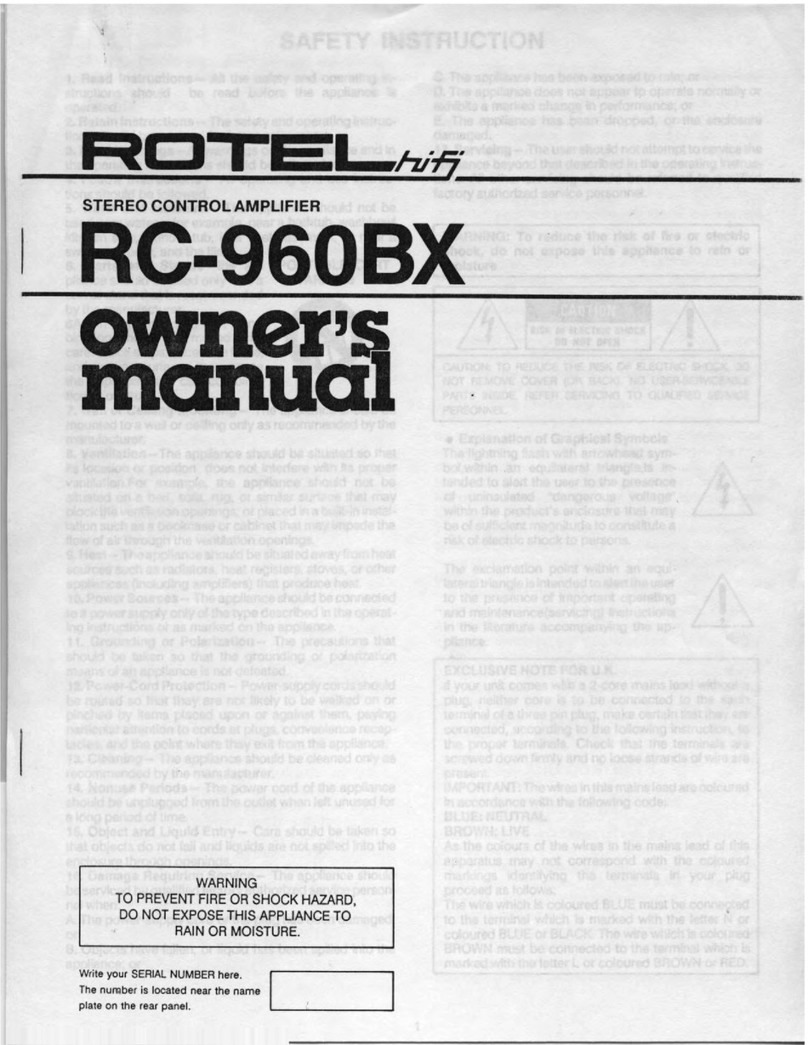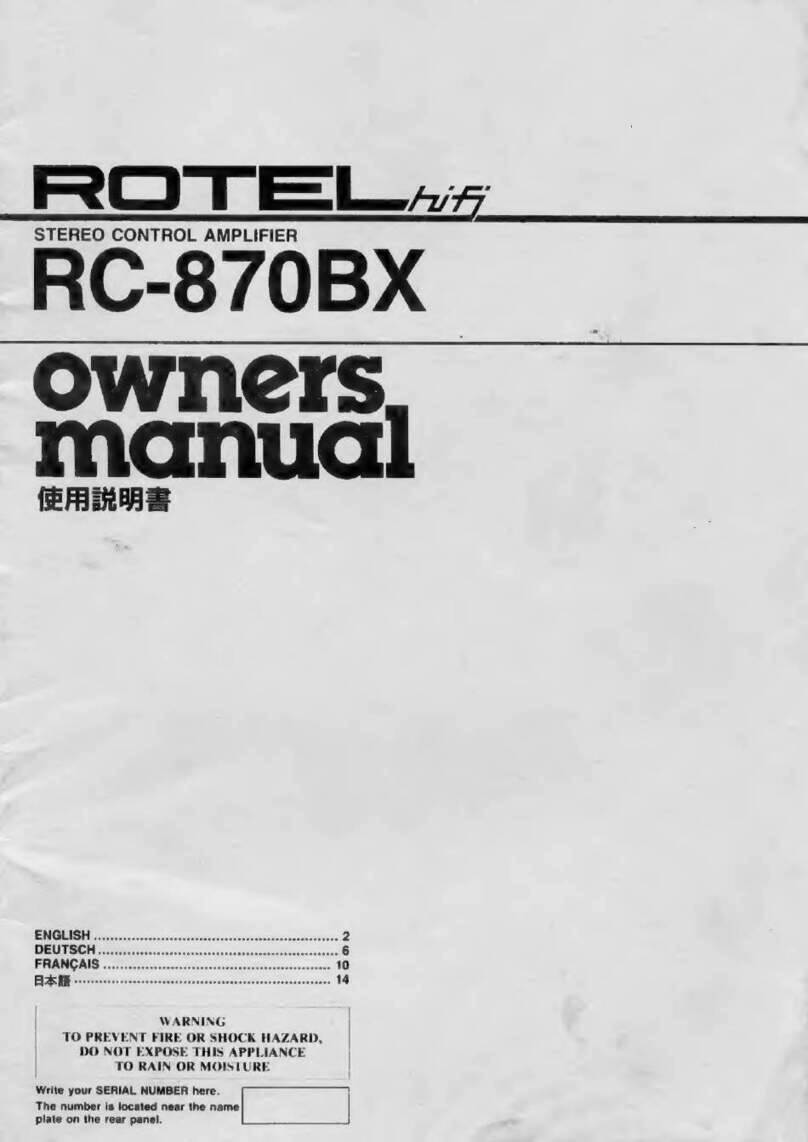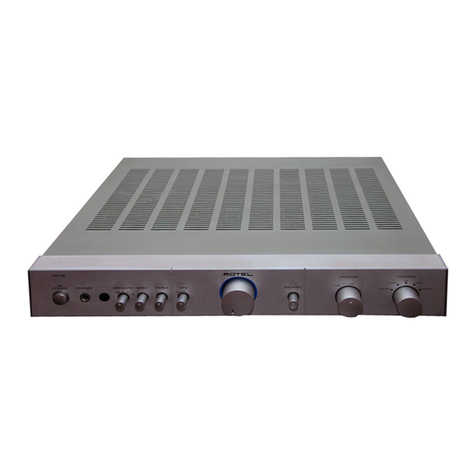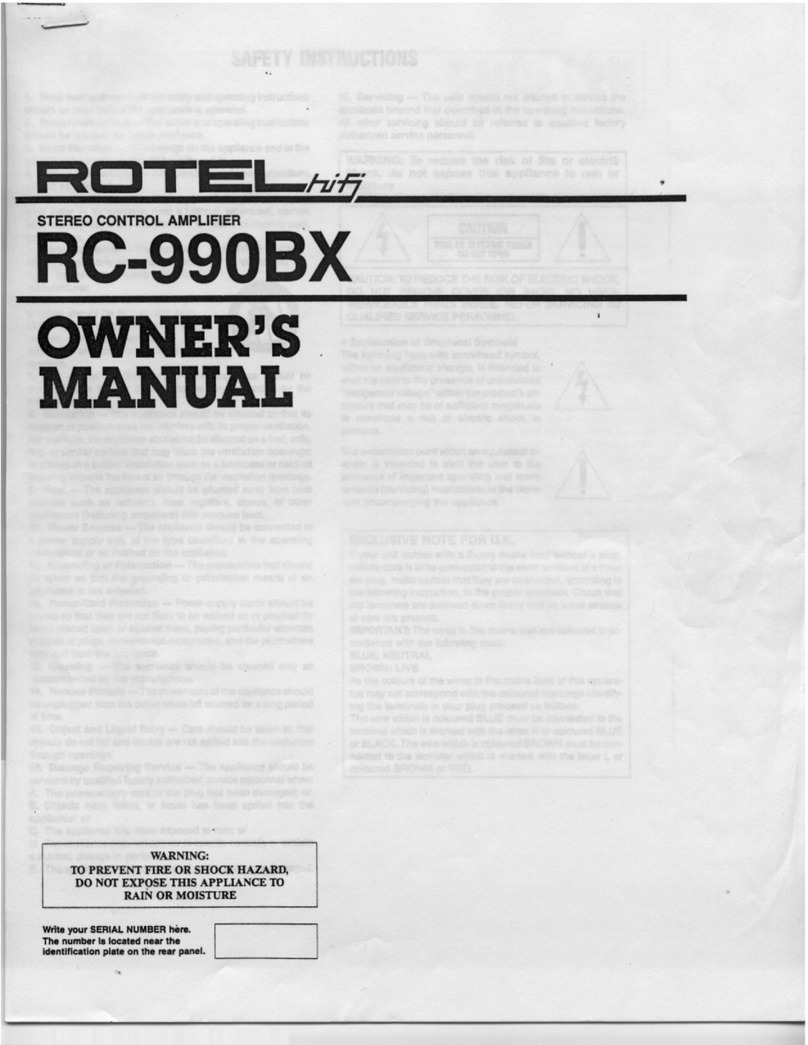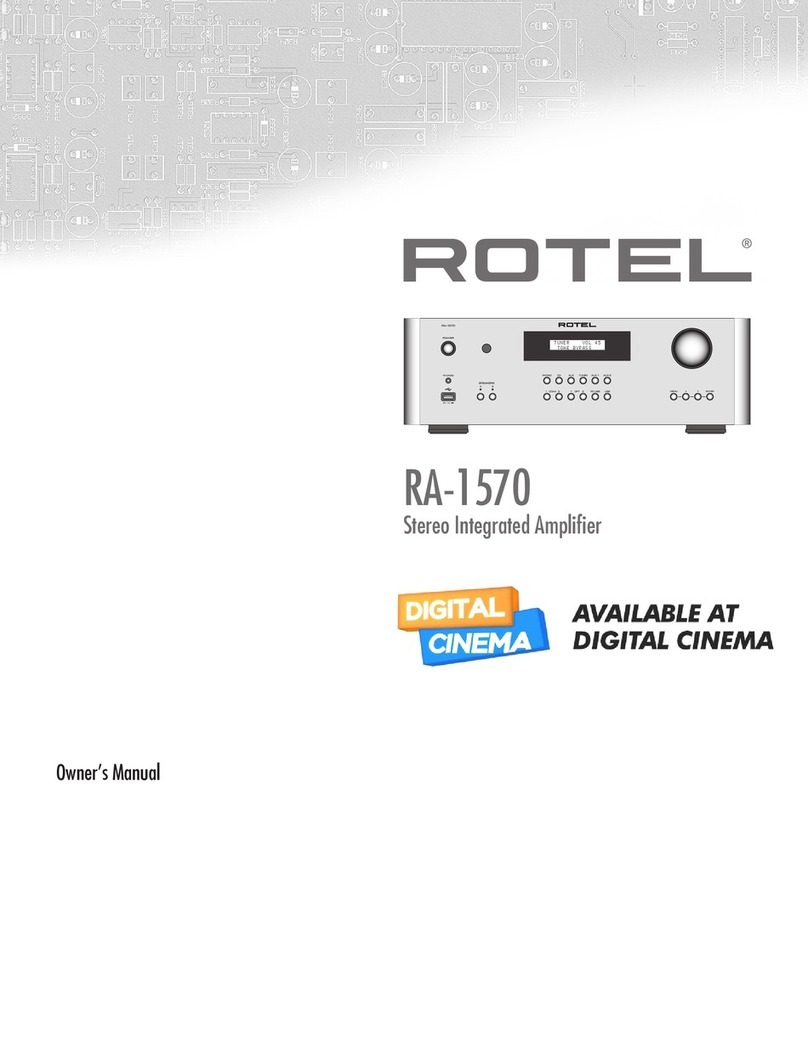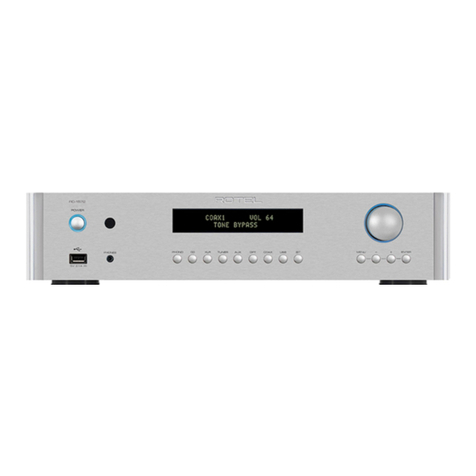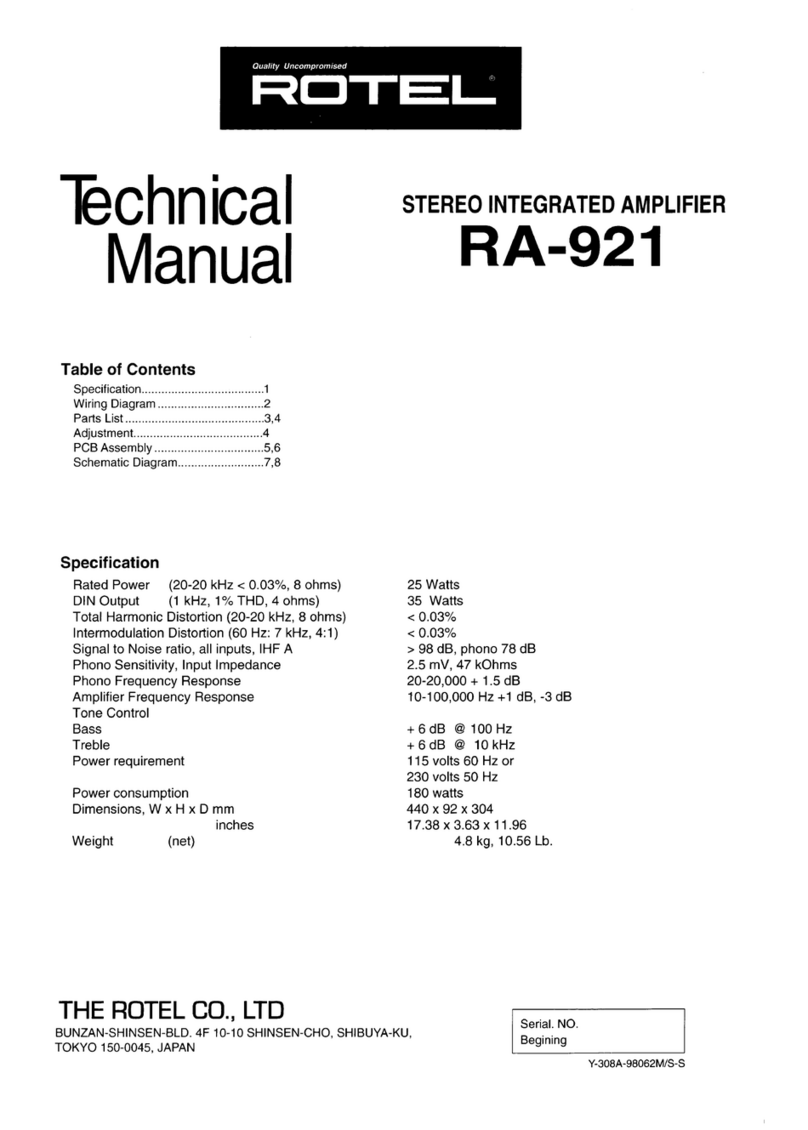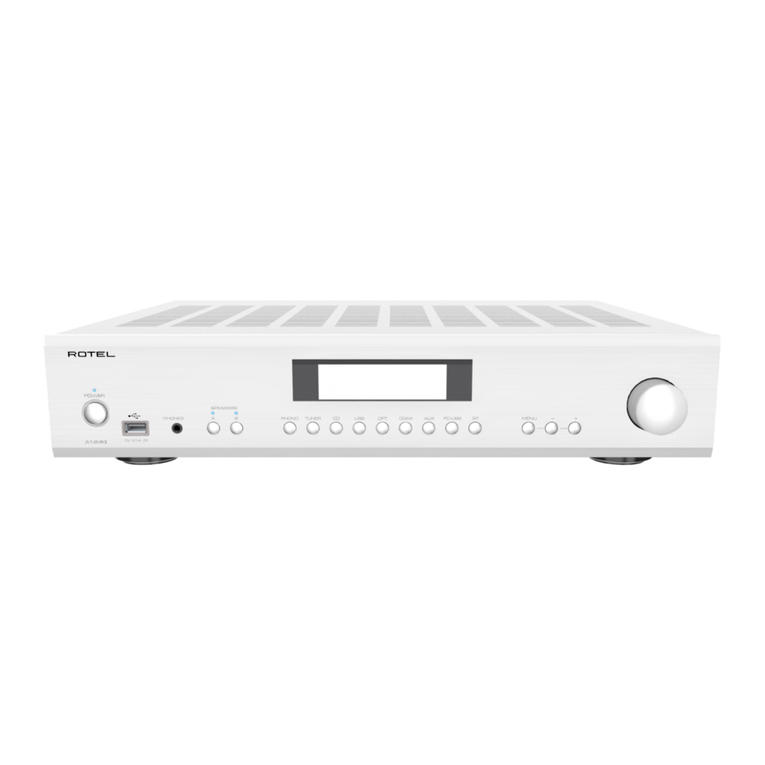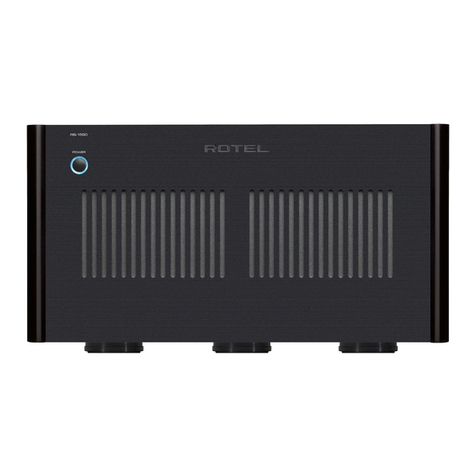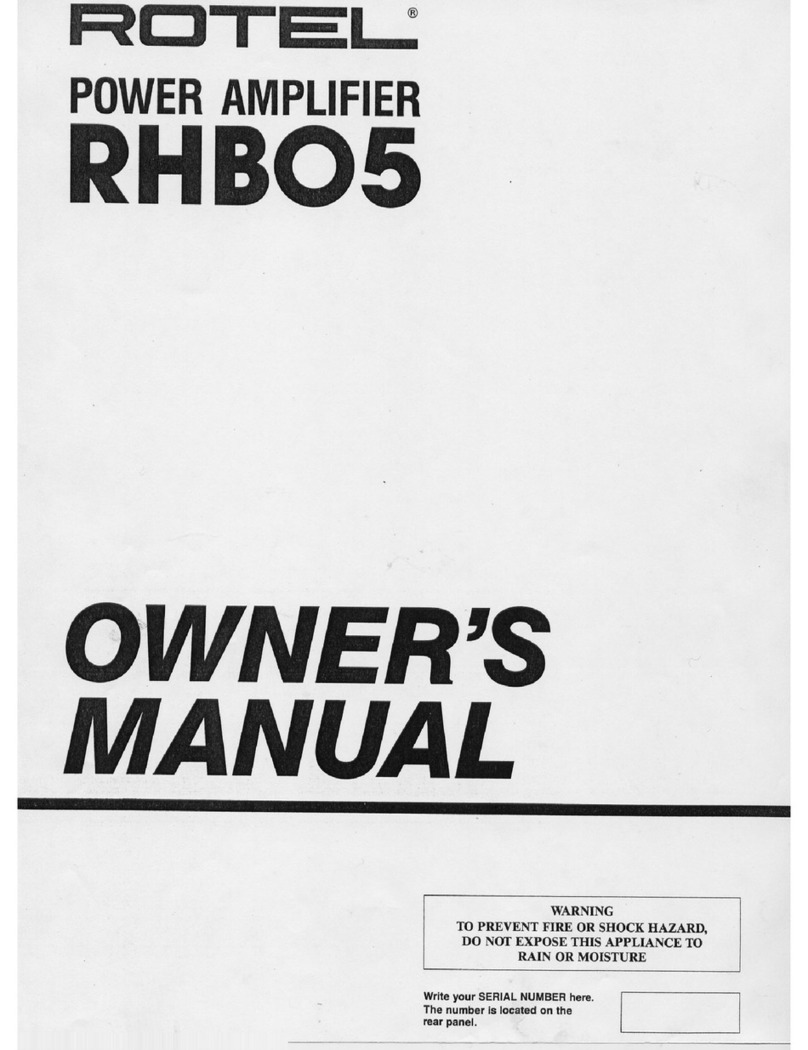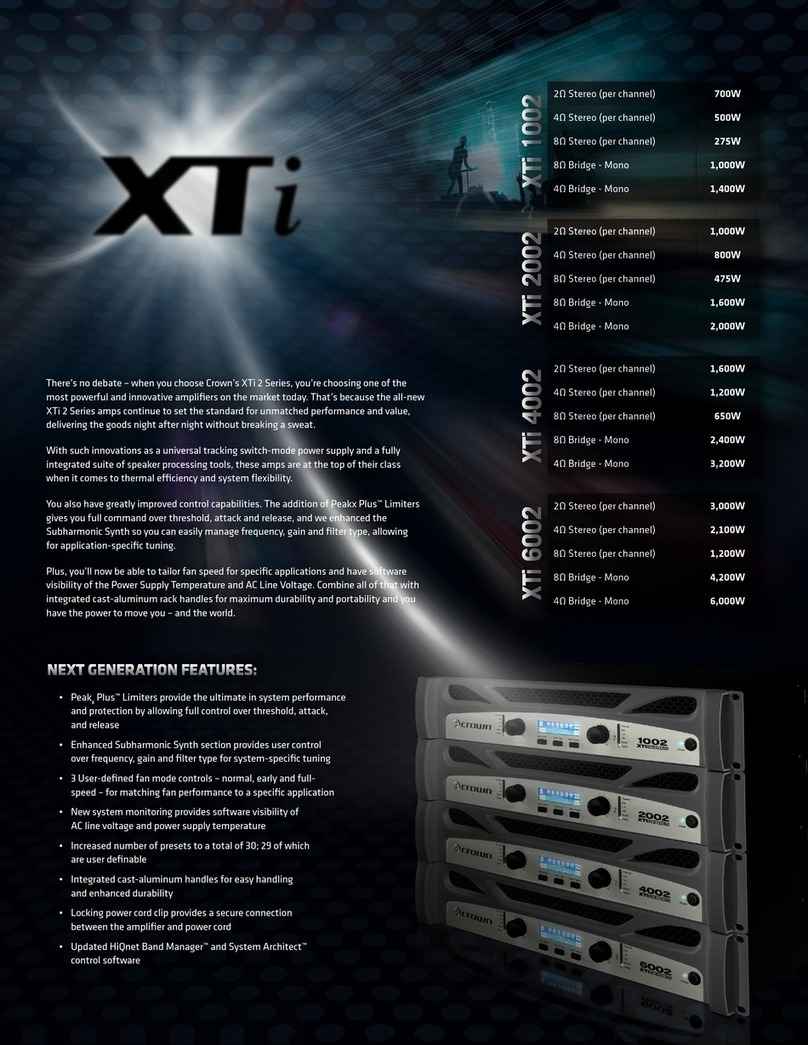6
AMPLIFICATEUR DE PUISSANCE À SIX CANAUX RB-976
○○○○○○○○○○○○○○○○○○○○○○○○○○○○○○○○○
Un mot sur Rotel
Rotel a été fondée il y a trente ans par une famille dont la passion
pour la musique l’a amenée a fabriquer des appareils haute
fidélité de la plus haute qualité. Cette passion s’est perpétuée au
fil des années et notre objectif d’offrir aux audiophiles et aux
mélomanes des produits de qualité exceptionnelle, quel que soit
leur budget, est partagé par tous les employés de Rotel.
Notre équipe d’ingénieurs travaille en étroite collaboration afin de
faire l’écoute de chacun de nos nouveaux produits et d’en
effectuer la mise au point jusqu’à ce qu’ils répondent à des
normes rigoureuses. Nos ingénieurs ont toute la latitude voulue
pour choisir des composantes provenant de n’importe où dans le
monde afin de concevoir les meilleurs produits possibles. Vous
trouverez ainsi dans nos appareils des condensateurs provenant
du Royaume-Uni et d’Allemagne, des semi-conducteurs provenant
du Japon et des États-Unis et des transformateurs toroïdaux
fabriqués directement dans les usines de Rotel.
Rotel a acquis sa réputation d’excellence grâce aux centaines de
critiques positives et aux prix qui lui ont été décernés par les cri-
tiques les plus chevronnés de l’industrie. Ces spécialistes font de
l’écoute musicale une activité quotidienne et leurs commentaires
nous permettent de rester fidèle à notre objectif, soit de concevoir
des appareils musicaux, fiables et abordables.
Rotel vous remercie d’avoir fait l’acquisition de ce produit qui,
nous l’espérons, vous procurera beaucoup de plaisir musical.
○○○○○○○○○○○○○○○○○○○○○○○○○○○○○○○○○
Préliminaire
Nous vous remercions d’avoir acheté l’amplificateur de puissance
Rotel à six canaux RB-976. Incorporé dans une chaîne audio ou
une chaîne de cinéma-maison de qualité, il vous procurera
beaucoup de plaisir musical pendant de nombreuses années.
Le RB-976 est un puissant amplificateur à six canaux dont le
rendement sonore est exceptionnel. Ses sorties discrètes, son ali-
mentation surdimensionnée, ses composantes de toute première
qualité et ses entrées balancées en font un appareil dont la
qualité sonore est de premier plan. Grâce à sa grande capacité en
courant, l’amplificateur est en mesure d’alimenter la plupart des
enceintes les plus exigeantes.
On doit être conscient que l’amplificateur RB-976 peut fournir une
puissance supérieure à 60 watts par canal et par conséquent
vérifier si les enceintes sont en mesure d’accepter cette puissance.
En cas de doute, communiquer avec un détaillant audio Rotel.
Le mode d’installation et de fonctionnement de l’amplificateur RB-
976 de Rotel est semblable à celui des autres amplificateurs. Si
vous êtes familier avec d’autres amplificateurs de puissance
stéréo, vous ne devriez pas être dépaysé. Il suffit de brancher des
câbles RCA de qualité dans le préamplificateur ou le processeur
et dans les prises d’entrée de l’amplificateur RB-976 et de
raccorder les enceintes et le tour est joué.
Quelques précautions à prendre
On doit lire attentivement ce manuel. En plus des instructions de
base concernant l’installation et le fonctionnement de
l’amplificateur, on y trouvera de précieux renseignements sur les
différentes configurations d’une chaîne ainsi que des
renseignements généraux qui vous aideront à optimiser le
rendement de votre chaîne. Pour de plus amples renseignements,
communiquer avec un détaillant audio Rotel autorisé. En cas de
besoin, on peut aussi communiquer directement avec Rotel. Nous
nous ferons un plaisir de répondre à vos questions et de recevoir
vos commentaires.
Conserver la boîte d’emballage d’origine de l’amplificateur ainsi
que le matériel d’emballage fourni en cas de besoin.
L’amplificateur RB-976 peut subir des dommages importants s’il
est expédié ou déplacé sans son emballage d’origine.
Remplir et retourner la carte d’enregistrement que l’on retrouve
dans la boîte de l’appareil. Conserver aussi la facture d’achat de
l’appareil. Cette pièce justificative est nécessaire si l’appareil doit
être réparé sous garantie étant donné qu’on y retrouve la date
d’achat de l’amplificateur.
Emplacement
Compte tenu de sa grande puissance, l’amplificateur RB-976 peut
dégager beaucoup de chaleur. Les dissipateurs de chaleurs et les
orifices de ventilation que l’on retrouve sur l’appareil sont en
mesure de dissiper toute la chaleur produite dans des conditions
normales d’utilisation. On doit cependant éviter de surcharger
l’appareil et prévoir suffisamment d’espace autour du boîtier. Les
orifices de ventilation prévus sur le couvercle ne doivent pas être
obstrués. On doit aussi permettre à l’air de circuler librement
autour de l’appareil. On doit faire preuve de jugement lorsqu’on
installe l’amplificateur RB-976 dans une armoire ou lorsqu’on y
empile d’autres appareils.
On doit aussi tenir compte du poids de l’amplificateur lorsqu’on
l’installe et s’assurer que l’étagère ou l’armoire sont en mesure
d’en supporter le poids. On doit encore une fois faire preuve de
jugement.
